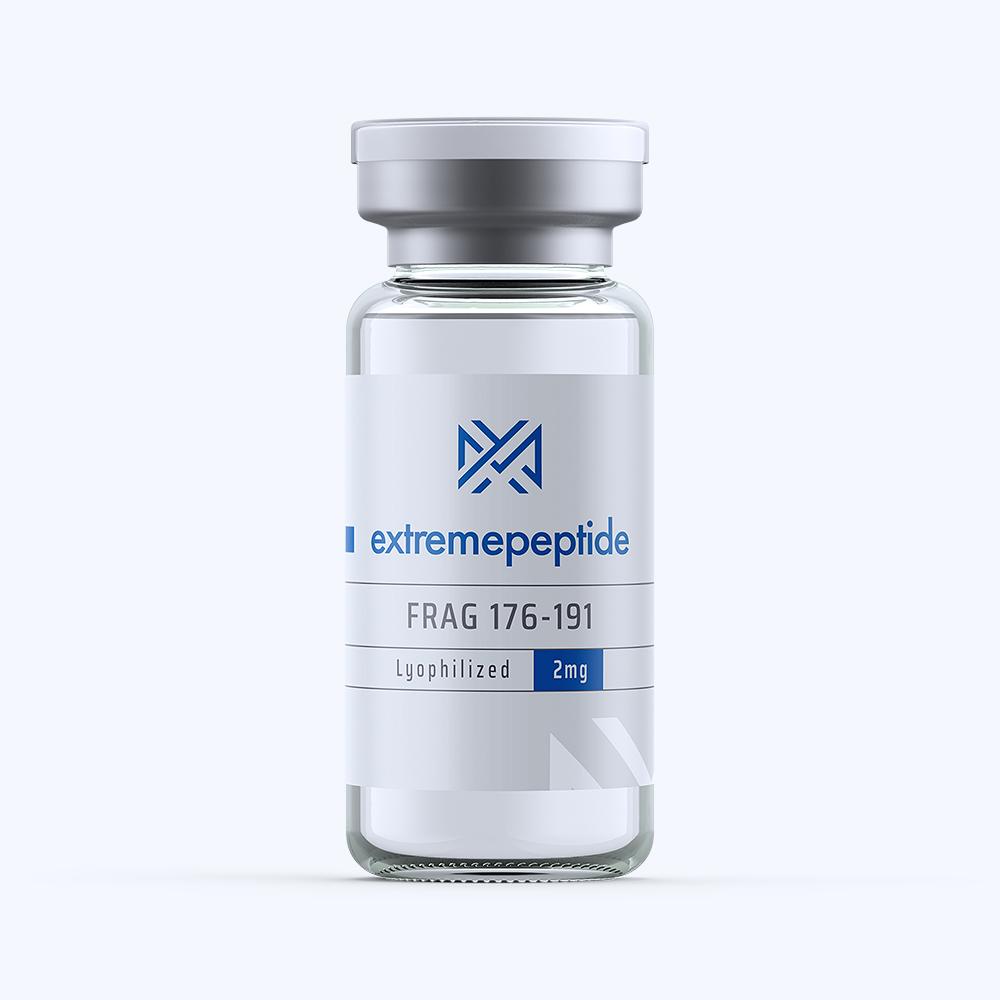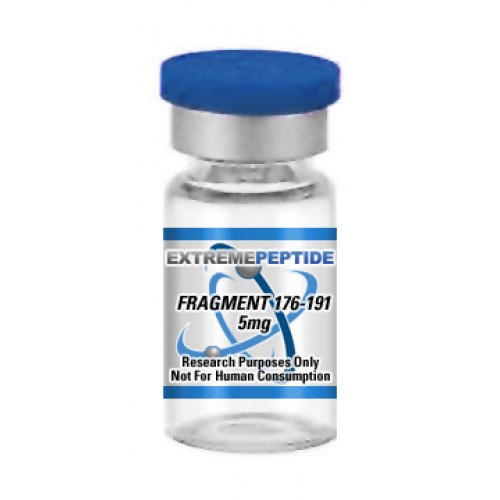Fragment 176-191 is a peptide that is a modified version of amino acids 176-191. Its molecular formula is C78H125N23O23S2, and its molecular mass is 1817.12. It is occasionally referred to by alternate names, such as:
- Frag 176-191
- Cytoplamsmic Protein 9.5
- Gracile Axonal Dystrophy
It has been shown to stimulate lipolysis, slow the process of lipogenesis, and exhibit antibiotic tendencies that are consistent with antigen binders.
 How Fragment 176-191 Functions
How Fragment 176-191 Functions
According to scientific study that has been conducted on animal test subjects, Fragment 176-191 functions by essentially mimicking the secretions that essentially control fat metabolism. However, the peptide has been shown to do so without creating the adverse affects that may otherwise happen in relation to blood sugar or cell proliferation. Because it can seize regulatory control of fat metabolism, it has been shown that it promotes the breaking down of body fat, promotes energy expulsion, boosts fat oxidation, and even elevates muscle mass.
Why Fragment 176-191 Functions
Scientific study based on animal test subjects has determined that Fragment 176-191 can function in this manner because it has an interactive relationship with the cytoplasm and the endoplasmic reticulum membrane that can be found within each cellular unit in an animal test subject. Fragment 176-191 works in conjunction with these two components to stimulate the ubiquitin-protein hydrolase involved in processing ubiquitinated proteins and ubiquitin antecedents. This enzyme will in turn mark the peptide bond at the glycene C-terminal of ubiquitin. Also, the peptide may bond to an unfettered monobiquitin in order to inhibit the degradation of lysosomes; the cell organelle that is chiefly responsible for breaking down waste materials and other cellular debris.
What These Processes Mean
Scientific study that has been based on animal test subjects has shown that Fragment 176-191 can be hypothetically linked to a host of different benefits.
- The first hypothetical benefit that has been linked relates to the process of lipolysis; that is, the breakdown of adipose tissue, also known as body fat.
- According to scientific study that has been built on animal test subjects, it has been determined that the presence of the peptide can allow for a rate of lipolysis to occur 12.5 times stronger than the rate when the peptide is not present.
- This then leads to a significantly more efficient rate of fat burning.
- Furthermore, it was determined that Fragment 176-191’s elevated process of lipolysis was not associated with any negative side effects, which sets the peptide apart from other peptides that have been shown to function in a similar manner.
Another benefit that has been theorized relates to Fragment 176-191’s association with brain membranes. Specifically, scientific study based on animal test subjects has derived the notion that the presence of the peptide can play a key role in the treatment or even the prevention of Parkinson’s disease and Alzheimer’s disease. The reason for this concept is due to the fact that the neuroendocrine systems of those that suffer from Parkinson’s or Alzheimer’s have been shown to have down-regulated versions of Fragment 176-191. Thus far, it has been thought that the presence of Fragment 176-191 may act to offset the toxicity of the protein malfunctions that have been shown to promote the onset of Alzheimer’s. Furthermore, it has been hypothesized that the presence of the peptide may be able to prevent the type of basal lesion that have been shown to contribute to the onset of Parkinson’s disease.
Insulin’s Reaction to Fragment 176-191
Scientific study that has been conducted on animal test subjects has also determined that there may be a link in the way in which Fragment 176-191 functions and the pancreas-secreted peptide insulin. These particular studies have indicated that the presence of the peptide have increased the levels of blood glucose in animal test subjects over a short period of time, and it allowed an animal test subject to experience a longer lasting increase of insulin levels in their plasma. These particular findings allowed researchers to show how amino acids work together in order to improve insulin travel regulation as a means to achieve a certain level of homeostasis. What’s more, these studies on insulin demonstrated that a peptide like Fragment 176-191, which is determined to be bioactive in nature, can remain fully operational with a minimum of the proper informational sequence.
